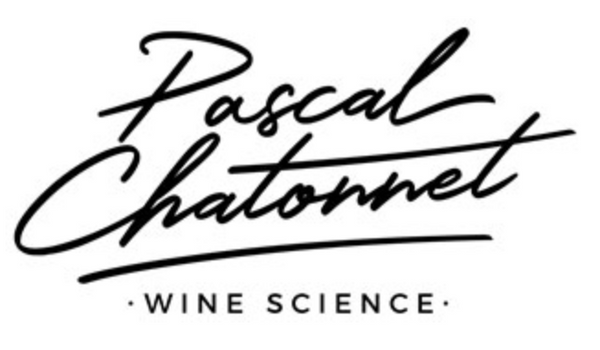1. Creating and preserving an overall natural, original and sustainable ecosystem
As we know, the conventional agricultural model is running out of steam, particularly in the area of viticulture. It is plagued by the significant use of plant protection products and synthetic fertilisers, soil depletion, limited resources for farmers, and discontent associated with a profession that has come under scrutiny. The time has come to transition to a new, more respectful model. Agroecology offers just such a model, one that preserves the environment and our health while producing better quality products.
Unlike organic agriculture, agroecology is not a label linked to precise and firm
specifications. Instead, it offers an approach that aims to improve agricultural practices in order to achieve more virtuous agriculture, a way of designing production systems based on the functions provided by the ecosystems. It amplifies them while seeking to reduce the pressure on the environment and protecting natural resources. The aim is to use nature as a factor of production as much as possible by maintaining its renewal capacities.
Agroecology is therefore an agricultural model inspired by nature to achieve healthier and more sustainable production. In nature, there are balances between fauna, flora and soil life. These balances allow the crops to better adapt to their environment and its variations (biotic and abiotic stress). Agroecology is governed by several founding principles, which can be summarised as follows:
- Soil protection: care for the soil is a foundational aspect of agroecology. No soil, no life! We have therefore reduced ploughing on our estates (no regular deep tillage) for 15 years now, to let permanent cover crops grow. This helps to protect the soil, reduce its compaction and maintains its unique identity by eliminating foreign chemical fertilisers (for more than 25 years now) and any input products that could negatively affect the soil microbiota (no chemical weed killers for more than 15 years now).
- Crop diversification: an agro-ecological estate is logically the opposite of single-crop farming! Crops are rotated in order to prevent soil depletion and crop associations are used to accommodate biodiversity and reduce the use of fertilisers and pesticides.Viticulture involves planting and cultivating the same plant in the same place for a minimum period of several decades. Therefore, this principle cannot be strictly applied to our viticulture, since we do not have surface areas that are compatible with this ambition.
I therefore chose to call our approach Agro-Synergic instead of Agro-ecological.
We strive to develop biodiversity that is as complex and comprehensive as possible
throughout all our vineyards, in the context of single-crop farming (see below).
https://www.fao.org/3/i9037en/i9037en.pdf
The Agro-Synergic approach is based on three fundamental pillars:
Care for natural environments;
Care for humans;
Care for the final product.
Care for natural environments: Agro-Synergy is a practice that aims to reduce
environmental impacts: discharge, input products and treatments in general are limited to protect natural resources and the original state of the agroecosystems. It is implemented with respect for biodiversity, as mentioned above: animals (wild and
domestic) form an integral part of our environment, but are not necessarily part of the production cycle (we do not raise livestock on-site at a sufficient scale to be
representative) and the local flora is protected. It is difficult to devote a minimum surface area to “biodiversity development”, as is required by the Biodynamic/Demeter framework (10% of the estate surface area), because not all estates are able to fulfil this condition due to their layout. In our case, we largely exceed this limit because of our wooded areas. Trees play a major role in Agro-Synergy. However, they must not seriously disrupt the mechanisation of operations that are required for technical and economic reasons. We therefore maintain and plant thousands of metres of hedges and woodland edges surrounding or in the centre of our vineyards. This breaks the monotony of the viticultural landscape, creating shelter conducive to a diversity of wildlife. In many places we are protected from northerly winds in the spring that can lead to frost. This also allows us to create beautiful and harmonious landscapes. But biodiversity is not limited to what we see on the surface. It is also, and above all, concerned with what is happening in the subsoil. We know that a decrease (-30%) in microbial diversity in the soil leads to a drop in the mineralisation of organic matter (- 40%), a change in plant productivity (-50%), a decrease in resistance to drought (- 15%), reduced structural stability (-50%) and an increase in the survival of plant pathogens in the soil (x3). 2
- Care for Humans: Agro-Synergy and agroecology are both fundamentally systemic practices. In other words, they both take the field into account as well as all its surroundings: farm buildings, the land and residents. The aim is to promote short distribution channels, on-site processing, and fair pay for workers.
- Care for the Product: Agro-Synergy also and above all reflects our ambition to
produce better quality, authentic wines with a richer identity and purer
composition, while matching the idea their author seeks to communicate: they are
not at the mercy of nature’s whims or the latest trends. They reflect the signature of a place, in a vintage that of course has variable characteristics caused by the weather, but with an invariable style that is all their own.
Although organic agriculture is based on a label, organic farmers can transition to a system that is even more agroecological by going so far as to exceed the organic specifications.
L. RANJARD 2020 La microbiologie des sols en vignes: quelle pratique pour un sol vivant? INRAE. UMR AGROECOLOGIE
DIJON https://www.youtube.com/watch?v=vDw6KndGK1U
Agro-Synergy, on the other hand, is not based on a label, but rather on a set of practices aimed at achieving an “ideal”. These practices are described below.

